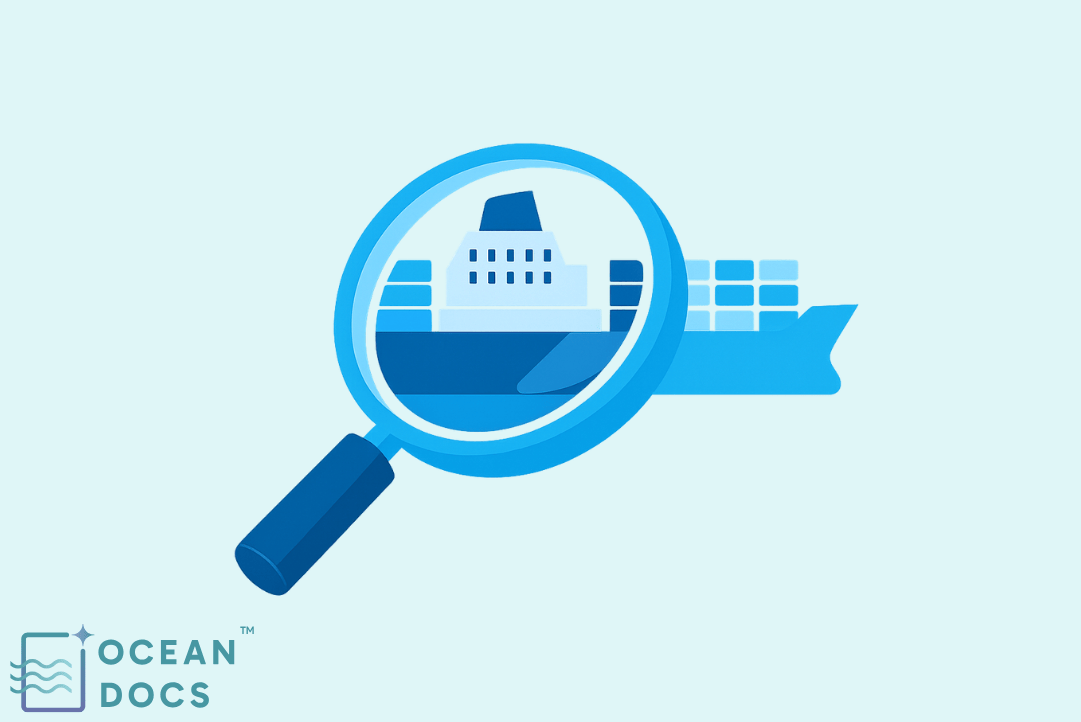
OceanDocs AI: Port State Control Inspections and Compliance
October 3, 2025 By OceanDocs AI
Port State Control (PSC) inspections are critical checkpoints for safe, compliant, and environmentally responsible shipping. For ship operators, these inspections are not just about following rules, they confirm vessels meet international standards and avoid delays or penalties. With OceanDocs AI, operators can streamline maritime documentation, stay inspection-ready, and ensure compliance with global regulations.
Understanding Port State Control
Port State Control allows national maritime authorities to inspect foreign vessels in their ports to confirm compliance with international maritime rules. These inspections verify that ships are seaworthy, environmentally compliant, and that crews are capable of handling emergencies.
PSC inspections are guided by conventions such as:
-
SOLAS (Safety of Life at Sea)
-
MARPOL (Prevention of Pollution from Ships)
-
ISM Code (International Safety Management)
-
LSA Code (Life-Saving Appliances)
-
IMDG Code (International Maritime Dangerous Goods)
Stages of a Port State Control Inspection
1. Documentation Review
Inspectors begin with safety certificates, crew licenses, pollution records, and cargo documents. Well-organized maritime documentation through OceanDocs AI creates a strong first impression.
2. Ship Condition Examination
Physical checks cover hull, deck safety, navigation systems, and compliance with LSA and IMDG Codes.
3. Operational Drills
Crews may perform lifeboat launches, fire drills, or oil spill response. This ensures marine technology systems and the crew’s readiness.
4. Environmental Compliance Checks
Logs such as ballast water management and waste handling are reviewed under MARPOL.
5. Crew Interviews
Inspectors may question crew about safety systems, documentation, and handling Port Authorities queries.
Why Vessels Fail PSC Inspections
-
Outdated or missing shipping documents
-
Faulty safety or navigation equipment
-
Crew untrained in marine technology systems
-
Gaps in compliance with pollution rules
Best Practices for Passing PSC Inspections
-
Keep Documentation Updated: Use document intelligence to manage certificates.
-
Train for Real Scenarios: Regular crew drills ensure smooth responses.
-
Maintain Equipment Proactively: Inspect marine technology systems regularly.
-
Stay Ahead with Compliance Tools: Get alerts for expiring certificates.
-
Know Port Requirements: Anticipate Port Authority focus areas.
The Role of Marine Technology in PSC Success
Modern solutions like OceanDocs AI transform PSC readiness. With digital logbooks, automated safety monitoring, and compliance dashboards, operators can reduce inspection risks.
Examples include:
-
Automated document checks for faster clearance
-
Environmental monitoring of ballast water and waste
-
Real-time diagnostics to cut downtime and failures
Conclusion
A PSC inspection is more than a regulatory formality, it is a test of operational, safety, and environmental standards. By adopting marine technology, maintaining documentation, and ensuring compliance, ship operators can pass inspections with confidence. OceanDocs AI helps keep vessels inspection-ready, compliant, and efficient across global ports.